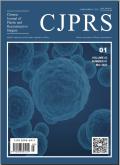Prevention of postoperative complications in axillary lymphadenectomy through adhesive application
Chinese Journal of Plastic and Reconstructive Surgery
Pub Date : 2025-09-01
DOI:10.1016/j.cjprs.2025.08.004
引用次数: 0
Abstract
Background
Postoperative complications, particularly those involving lymphatic drainage, remain a significant challenge for patients undergoing axillary lymphadenectomy (ALND) as part of breast cancer surgery. These complications can delay the initiation of adjuvant therapies, increase healthcare costs, and negatively affect patients’ quality of life. This study evaluated the use of a latex-based tissue adhesive (LTA) as an intraoperative strategy to prevent seroma formation and prolonged lymphorrhea following axillary dissection.
Methods
In this prospective study, 65 female patients diagnosed with stage IIb–III breast cancer and clinically confirmed axillary lymph node involvement were enrolled. Participants were divided into two groups. The study group (n=33) received an intraoperative application of LTA without drainage, while the control group (n=32) underwent standard ALND with placement of a silicone vacuum drain. Postoperative outcomes assessed included lymphatic drainage volume, number of aspirations, duration of lymphorrhea, length of hospital stay, and incidence of complications.
Results
Use of the LTA significantly reduced both the volume and duration of postoperative lymphorrhea. By postoperative day 10, the average wound exudate volume in the LTA group was 8.2 ± 3.3 mL, compared to 54.1 ± 3.9 mL in the control group—an 84.8% reduction. The LTA group also experienced shorter hospital stays and fewer cases of postoperative seroma requiring intervention.
Conclusion
LTA appears to be a safe, effective, and practical intraoperative technique for preventing lymphatic complications after ALND. Its use may reduce dependence on drainage systems, shorten hospitalization, and support earlier initiation of adjuvant therapies, ultimately improving surgical outcomes and patient recovery.
应用粘接剂预防腋窝淋巴结切除术术后并发症
作为乳腺癌手术的一部分,腋窝淋巴结切除术(ALND)患者的术后并发症,特别是涉及淋巴引流的并发症仍然是一个重大挑战。这些并发症可延迟辅助治疗的开始,增加医疗保健费用,并对患者的生活质量产生负面影响。本研究评估了使用乳胶基组织粘接剂(LTA)作为术中策略,以防止腋窝清扫后血清肿形成和延长淋巴漏。方法本前瞻性研究纳入65例诊断为ii - iii期乳腺癌且临床证实腋窝淋巴结受累的女性患者。参与者被分成两组。研究组(n=33)采用术中应用LTA不引流,对照组(n=32)采用标准ALND并放置硅胶真空引流管。术后结果评估包括淋巴引流量、吸痰次数、淋巴漏持续时间、住院时间和并发症发生率。结果使用LTA可显著减少术后淋巴漏的数量和持续时间。术后第10天,LTA组平均创面渗出量为8.2±3.3 mL,对照组为54.1±3.9 mL,减少84.8%。LTA组的住院时间更短,术后需要干预的血肿病例也更少。结论lta是一种安全、有效、实用的预防ALND术后淋巴并发症的术中技术。它的使用可以减少对引流系统的依赖,缩短住院时间,并支持早期开始辅助治疗,最终改善手术结果和患者康复。
本文章由计算机程序翻译,如有差异,请以英文原文为准。
求助全文
约1分钟内获得全文
求助全文
来源期刊

Chinese Journal of Plastic and Reconstructive Surgery
Surgery, Otorhinolaryngology and Facial Plastic Surgery, Pathology and Medical Technology, Transplantation
CiteScore
0.40
自引率
0.00%
发文量
115
审稿时长
55 days
 求助内容:
求助内容: 应助结果提醒方式:
应助结果提醒方式:


